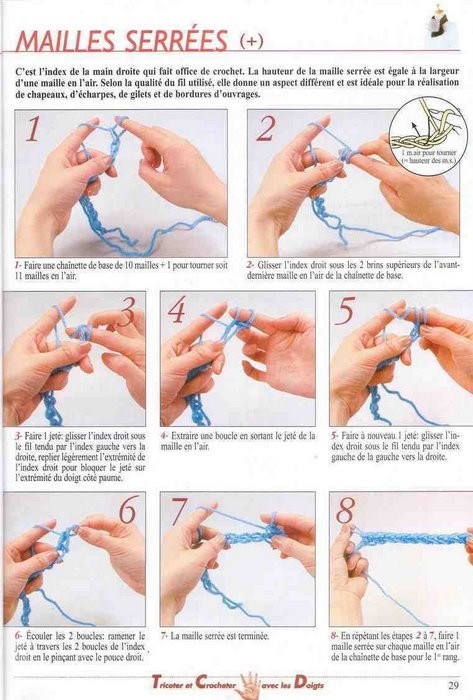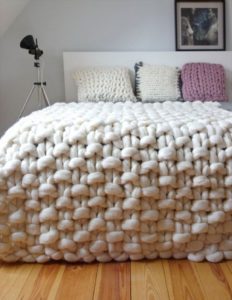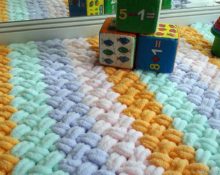 Fashion dictates its terms not only in clothing. Its influence extends to all areas of our lives. So the interiors of residential premises did not escape this fate.
Fashion dictates its terms not only in clothing. Its influence extends to all areas of our lives. So the interiors of residential premises did not escape this fate.
Recently, decorative details made by hand have become increasingly popular. This is especially true for textiles: tablecloths, napkins, various capes and, of course, blankets. Many craftswomen consider making this item a difficult task that requires a lot of free time.
But there is one option that even a beginner can create. This is a blanket on your arms. It knits quickly and effortlessly.
The only thing you need to implement is to purchase special yarn. Your knitting tools will be your hands and fingers. Let's consider these methods in more detail.
Knitting technique without knitting needles
Using this method, you can not only make a beautiful thing, but also calm your nerves after a busy day at work.
Three main techniques can be distinguished. They are based on imitation of traditional knitting:
- crochet;
- knitting needles (on four or three fingers);
- knitting needles (on hands).
The first option allows you to get an item of any size, as it is knitted one loop at a time. Both hands are involved in the action. The movements are similar to crocheting, but you use your finger instead of a tool..

The following method allows you to create small stripes of varying lengths. Subsequently, they can be combined with each other into any thing, for example, a stylish bedspread. A product made of multi-colored stripes will look especially beautiful and original.

The three-finger method is very similar to the one described above, only the finished part will be made from three loops.

The latter method helps to create a product using both stockinette stitch and various variations of weaves: rice, braids, braid. In this case, the instrument is your hands, which are used as knitting needles.

Reference! A blanket created in this way has a lush volume and looks the most attractive. Therefore, care for it must be treated with special care. This rule especially applies to washing and drying.
How much thick yarn do you need for a blanket?
Calculation of the required amount of material for a particular product will depend on several indicators.
- Thread density and twist. The more the thread is twisted, the less volume it will have, which means more of it will be required.
- Complexity of weaves. Complex braids or braids require more thread. While garter stitch or satin stitch is more economical.
- Product dimensions. Well, it’s clear: the larger the size, the greater the consumption.
It matters what kind of yarn you knit with. At the moment, two types of special options can be distinguished.
- Gigantic, which is made from merino wool.

- Plush Turkish-made yarn “Alize Puffi”. Its thread is a series of loops that are intertwined to obtain the desired shape.

Attention! You can make your own knitting material by combining the fibers of several skeins into a single thread. Their number can be determined experimentally.
To calculate the quantity for a specific product, knit a small sample. Then multiply the area of the blanket by the length of the thread and divide by the area of the sample. You will get the required footage.
You can also use approximate calculations for a similar product.
Description of knitting a blanket
For a better understanding of the workflow, we suggest looking at the creation of a blanket in detail using an example.
Giant yarn

- Cast on the loops on your hand
Hinge set 1

Set of loops 2

Knit the fabric according to the “pearl” pattern to the desired height.
Pearl pattern diagram

- Close the loops.
Plush yarn
For Alize Puffy yarn, the creation process is slightly different.

- Count the required even number of stitches from the edge.
- Cross the two outermost counted loops together.
Attention! In one row, you need to cross the threads in one direction.
- Interlace them with the following loops on the free thread.
- Then repeat similar steps until the row is completed.
- In the next row, set aside the first stitch. Next, perform as the first row.
- The last stitch is the beginning of the next row. It is performed in the same way as the previous one.
- Repeat in the same pattern until the fabric of the required size is knitted.
It is not difficult to weave a blanket with a large knitted stitch. You can make both an adult and a children's version. You will receive pleasure both at the time of production and when using the new blanket.


 0
0





